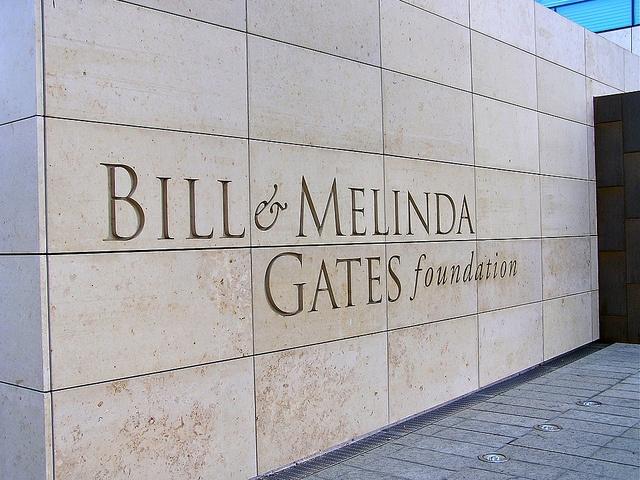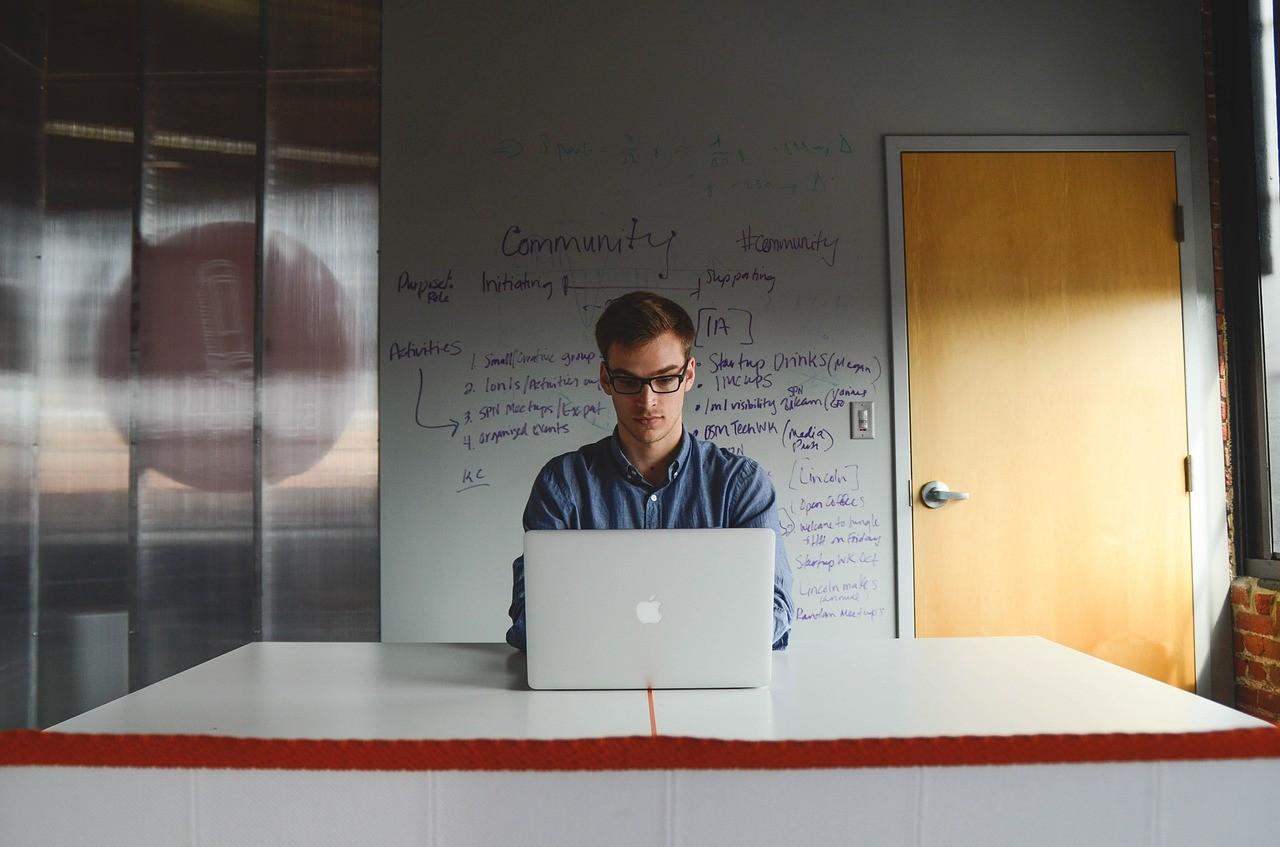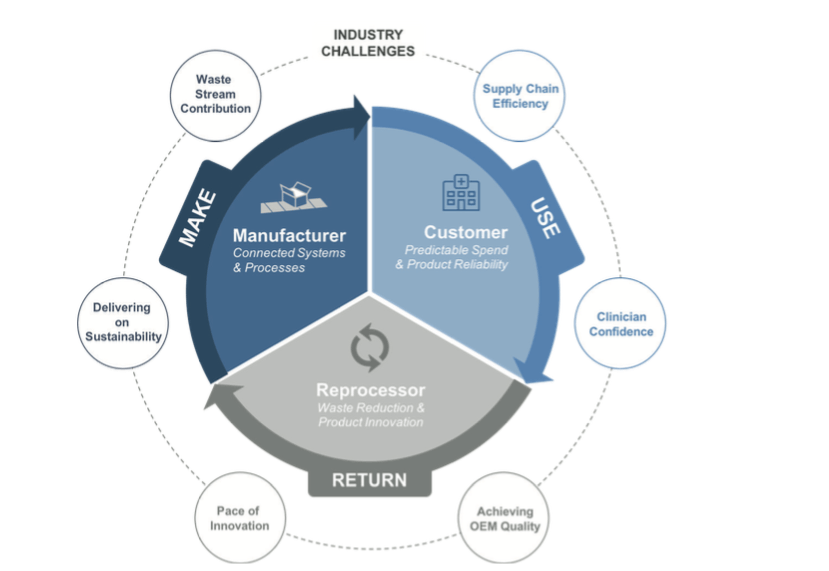4 Ways to Share Your Brand’s Philanthropic Story


By Jennifer Spencer
According to a 2015 study by Cone Communications, 64 percent of millennials use social media to address or engage with companies around social and environmental issues.
Whether your corporation already has a large digital footprint or you are looking to up your efforts, it’s time to take a closer look at your digital storytelling. After all, making your corporate social responsibility (CSR) story readily accessible online is an effective way to engage consumers, attract more eyeballs and enhance your overall brand image.
The good news? There are a plethora of simple ways to get started via not only social media, but also dedicated Web pages, links, videos and more. Here are four ways to dive into the world of digital storytelling that interweave brand marketing with CSR:
1. Create a home base
Your Web page is the home base, a tool that allows you to build awareness and support your overall brand message. Design a dedicated Web page to share your mission, and give clear criteria for support of your CSR program.
List your focus, giving program(s) and how your audience can get involved. Think of your dedicated CSR Web page as the face of your giving program: Consumers should be able to reference and navigate it easily.
Aside from sharing the link to your dedicated Web page on your social media accounts, you can also share it in marketing collateral, press releases and more.
2. Paint a picture
With our smartphones always in hand, it is easy to gather pictures and videos on the spot. Use these to give followers a behind-the-scenes look into your CSR programs. You can also use a videographer for more in-depth videos.
Make it easy to view and share your photos, quotes and videos by providing links. Making it as easy as possible for people to share your content allows for maximum visibility (more eyeballs!) on your posts. Repurposing your content for posting on a variety of platforms such as Pinterest, Instagram and Twitter is also key to spreading your message.
Numbers don’t lie: Collect and utilize data to formulate impact reports of your programs to share online as well.
3. Give voice to your employees
Help employees share on their personal social media accounts and offer incentives for spreading the word. Chances are that employees who already have a large network on their social media accounts will be interested in learning more.
A study by Deloitte showed that 96 percent of employees who volunteer report that the corporate culture at their workplace is somewhat positive or very positive. This is a win-win: happy employees and happy consumers. Employees take pride in their company’s efforts to make an impact on society, and consumers can relate to stories about employees getting involved and not just dollars spent.
4. Write it down
Blogging is the bread and butter of digital storytelling. People connect with brands when they feel like they are part of a story. Keep your audience posted with blog posts throughout your CSR program.
The truth is you do not have to be an amazing writer to get started with blogging. If you can share something that will resonate with consumers emotionally, then they are more likely to discuss or share the content. You can use the pictures, quotes and videos you collected to supplement your articles as well.
The bottom line
Jump in and learn as you go! See what your audience is sharing and commenting on as well as where they are finding your content. You might find certain channels to be more effective in reaching your audience than others, or you may find a whole new market/audience by trying a previously untapped medium.
Image credit: Pixabay
Jennifer Spencer is Content Marketing Manager at Versaic the leading provider of software-as-a-service (SaaS) solutions for corporate social responsibility (CSR).
UK businesses need a long-term growth agenda: report


by Vikas Vij — Over the past few decades, British business has made significant progress in many areas – from better governance to leading in major industries. However, there are a number of areas where a visionary business approach is necessary to achieve global competitiveness and sustainability. Most importantly, the overall business focus must shift from short-term gains to long-term value creation.
The good news is that an alternative business approach already exists, which focuses on long-term purpose, values and relationships. Tomorrow’s Company has announced the conclusion of its year-long research project into the progress and prospects of British business. The outcome of this Futures Project is a report called UK Business: What’s wrong? What’s next?
The report highlights the global competitive advantage that UK businesses can gain through a long-term, sustainable business approach. This approach recognizes that success starts with engaged employees, satisfied customers and stable suppliers; with shareholder returns being the end result, not the starting aim. It is underpinned by a clear purpose and set of values that help guide behaviors, and a long-term view that embraces risk.
Tomorrow’s Company outlines several steps that UK companies, institutions, and policy-makers can take to build core competencies for a robust, growth-oriented future. These include:
- Simplifying the investment chain by reducing intermediaries to lower costs and provide savers a more direct connection to their investments
- Shifting focus for fund managers from fighting for a larger slice of the pie to growing the size of the pie
- Lengthening executive pay horizons to reduce the focus on short-term share price movements
- Focusing on in-depth analysis for long-term decision making through increased company disclosure, creating financial training courses, and hiring experienced analysts
- Fostering collaborative and reciprocal relationships with key stakeholders
- Improving corporate governance
- Encouraging diversity in business forms through promotion of employee ownership, adopting a stewardship approach to privatization, and ensuring public procurement is not solely based on price
- Formulating a coherent government policy to encourage investment and build healthy companies
Commenting on the findings, Mark Goyder, Founder and CEO, Tomorrow’s Company, said that UK companies should start purposefully investing in the long term, and they should be held to account by shareholders and boards in a climate reinforced by government policy. The report cites the examples of a number of UK companies that are already exhibiting a long-term approach, including Admiral Insurance, JCB, Adnams, and Unipart.
Source: Tomorrow’s Company
Image Credit: Flickr via Jon Bunge
This article originally appeared on Justmeans.
It's Really Happening: The Collapse of U.S. Coal


Coal production is not just declining. It's falling off a cliff -- and it's barely a third of what it was just six years ago, according to the U.S. Energy Information Administration (EIA). The worst is yet to come, as the EIA predicts 2016 will be the biggest year-on decline for coal ... ever.
Nothing is crazy when it comes to the collapse of coal anymore. Just a few years ago, coal was still America's top fuel and its lobbyists were among the most well-connected (and deep pocketed) in Washington, D.C. Today, that era seems like a distant dream. The coal lobby is shrinking fast, and the industry isn't faring much better: Just last month the largest private coal company, Peabody Energy, which in 2008 had a market cap of $20 billion, declared bankruptcy.
“A profound shift is happening right now in America's energy landscape,” said Mary Anne Hitt and Bruce Nilles, the director and senior director of the Sierra Club's Beyond Coal Campaign, in a joint letter last month. “With the bankruptcy of Peabody Energy, it’s clear that the coal industry is in decline, and that a massive shift in the global market favoring clean-energy sources like wind and solar is underway.”
According to the EIA, 2016 coal production is projected to fall 16.7 percent to 746 million tons, which it would mark over a 25 percent decrease from the 2014 total of 1 billion tons. Even last year, no one could have foreseen such a huge drop in just 12 months.
It's hard to overstate how unexpected and massive this shift is. Remember, the United States is routinely called the 'Saudi Arabia of coal.' We have more of the dirty fossil fuel than any other country, an astounding 28 percent of recoverable global coal reserves. That's 260 billion short tons in total, much of which, even today, remains underground. Coal was, literally, the foundation of the American economy for generations, and, just a decade ago, seemed set to cement its status as our primary energy source for the foreseeable future.
Amazingly, the collapse of coal has caught nearly every financial analyst at any major bank by surprise, yet many still believe that this is merely a temporary lull, akin to what petroleum saw in the late '90s when oil prices dropped to just $18 a barrel. They think, with time -- like with petroleum -- that coal will return to higher prices and once again be a competitive global energy source. That is why, to this day, many continue to invest in coal, including the Bill and Melinda Gates Foundation, as 3p reported last year.
While I have no sympathy for investors who got it wrong, I do have sympathy for those really feeling the brunt of coal's collapse. One thing that we must consider is that thousands of low-wage workers in the coal industry no longer have jobs, and many mines have been shut down without having conducted proper clean-up. They cannot – and must not – be forgotten.
“America needs to invest in the livelihoods of workers and communities historically dependent on coal,” Hitt said. “This means making sure that the new clean-energy economy provides good jobs for the people who most need them, while also ensuring that mining sites are cleaned up and reclaimed for the health and safety of communities near them.”
What's even more encouraging is that we're starting to see signs that this shift away from coal is happening globally. China has sharply dropped its coal imports, while earlier this year Vietnam announced plans to abandon its previously ambitious coal power plants in favor of investment in renewable energy. India's coal imports dropped by a surprising 35 percent last year due to massive oversupply and a quicker-than-expected expansion in renewables.
Coal is on the way out. Now, we just need to take care of natural gas and oil.
Image credit: Kirloskar via Flickr
Gates Foundation Divests Holdings in BP


The Bill and Melinda Gates Foundation supports plenty of impressive work when it comes to social enterprise, women’s empowerment, fighting infectious diseases and lifting people out of poverty. But the foundation’s investments in fossil fuel companies run the risk of ultimately curtailing such progress, critics say.
For years, Bill Gates himself pushed back against these naysayers, telling The Atlantic last year that divestment campaigns were “false solutions” that did not help the world’s need to find an “energy miracle.”
Recently, however, the Gates Foundation has changed its tune -- not necessarily by words, but by actions. According to a Securities and Exchange Commission (SEC) filing issued late last year, the foundation sold over 6 million shares of BP advanced depository receipts (certificates sold by banks that represent foreign stock sold in the U.S. equities markets) that together totaled over $187 million.
That is less than 0.50 percent of the foundation’s total endowment of $39.6 billion. But for divestment campaigners, this is still a victory in the quest to convince philanthropic foundations, universities, and pension funds to rid themselves of securities in oil and coal companies. For the Gates Foundation, which gave out grants totaling over $4 billion last year, much of decision was most likely financial: The Guardian newspaper suggested that the value of the foundation’s energy holdings has most likely declined by as much as 85 percent since 2014.
The Gates Foundation’s decision follows the lead of cities and private foundations that are divesting from fossil fuels to the tune of over $3 trillion.
Seattle, home to the Gates Foundation’s headquarters, takes the credit for being the first large city in the U.S. to wean its investments away from oil and coal companies, though the process has reportedly not been easy. San Francisco’s Board of Supervisors also passed a resolution last year urging the city’s pension fund to divest over $580 million from holdings tied to the fossil fuel industry — but by some press accounts, that process has also moved slowly.
Universities in those regions, however, have resisted the calls for divestment. A 40-minute drive south from San Francisco, Stanford University’s Board of Trustees voted against selling off equities in oil and gas companies. And, like many universities, the University of Washington agreed to divest from coal, but some say it's moving too slowly when it comes to doing the same with oil and gas companies.
Meanwhile, private foundations -- ranging from those run by the extended Rockefeller family to the Ben & Jerry’s Foundation -- have increasingly sold off their stakes in fossil fuel companies. Even before the price of oil slumped in 2014, an Oxford University study posited that fossil fuel divestment campaigns were accelerating at a quicker pace than similar agendas directed toward tobacco companies or the 1980s movement against South Africa’s apartheid policy.
Countries in oil-producing regions, of course, have been slower to join this global movement to divest from fossil fuels for obvious reasons. In the North Sea, which emerged as an oil-producing region in the 1980s and 1990s, Norway’s sovereign wealth fund is beginning to divest from its coal-related holdings; universities in Scotland are also selling off assets issued by fossil fuel companies.
But don't plan to hear much talk about divestment in the Middle East any time soon (as those companies are generally state-owned). In a departure from business-as-usual in the region, Abu Dhabi, United Arab Emirates, manages a $250 million clean tech fund. It is a tiny amount indeed, but it's evidence that more of the world is at least listening to what supporters say are the moral, environmental and business cases for fossil fuel divestment.
Image credit: Lester Public Library
Judge Rules South African Gold Miners Can Pursue Class-Action Suit


In a historic decision for South Africa, a Johannesburg judge ruled that thousands of gold miners can progress with their class-action lawsuit against 30 companies, which include African Rainbow Minerals, Anglo American, AngloGold Ashanti, Gold Fields and Harmony Gold.
Many of these workers claim they suffer from conditions such as silicosis and tuberculosis as a result of working within the approximately 80 mines that the lawsuit’s defendants own. The litigation could lead to a 10-year-long court case, the BBC reports.
As many as 200,000 miners are suffering from silicosis in what researchers have described as a “pandemic,” the result of working for years in these underground mines, CNN reported on Friday.
South Africa is one of the world’s largest gold producers, dating back to the 19th century when mineral riches in southern Africa turned hundreds of immigrants into millionaires. One of those millionaires was Cecil Rhodes, who established the famous Rhodes Scholarship program at Oxford University and for whom Rhodesia, now independent Zimbabwe, was named. But critics of the gold-mining industry have long pointed out its effects on the poorest workers, especially in South Africa, where illnesses such tuberculosis have ranked amongst the highest rates in the world.
According to South Carolina-based law firm MotleyRice, thousands of workers died from illnesses during and after working in South African gold mines. The plaintiffs’ litigation firm, one of the largest in the U.S., was retained by South African human rights attorney Richard Spoor to consult on the lawsuit, the origins of which date back to 2012.
Spoor claims that thousands of miners, many of whom were migrant laborers from some of the poorest regions in South Africa and surrounding countries, are still suffering from working in these mines, the operations of which date back as far as the mid 1960s. Spoor, who has worked on behalf of these coal miners’ cause since 2011, alleges that mining companies knowingly harmed their workers, even as they were aware of the dangers of silica dust, which researchers have long linked to silicosis.
Many environmental organizations, including Earthworks, have raised awareness for what they say are the dangers of the mining industry, and urged consumers to avoid what they describe as “dirty gold.” In addition to the health effects, Earthworks cites violence against indigenous peoples, land-grabbing, and other human rights violations due to the global gold-mining industry’s negligence or lack of oversight.
And as the world’s demand for gold surged, gold mining has become far more complicated. Publications such as Smithsonian Magazine outline how gold-mining is largely a carbon-intensive process, as massive amounts of earth must be processed to extract those lucrative trace amounts of gold. Whether processing gold from underground mines or open-pit installations, mining has left an indisputable impact on the planet and people.
To that end, South Gauteng High Court Judge Phineas Mojapelo ruled the lawsuit in South Africa can proceed for two groups of mine workers. Current and former miners who contracted silicosis, as well as descendants of deceased miners who worked for at least two years within one of the mines owned by the lawsuit’s defendants, comprise one class of plaintiffs. Mine workers who contracted tuberculosis, or the descendants of such miners, comprise another class under the litigation’s umbrella.
Spoor and his legal partners issued a statement shortly after the court’s announcement:
“A pervasive culture has existed for decades in the mining industry that views these miners as disposable. Therefore it has been a privilege to represent them and offer a voice to thousands who have never had one and who have been ignored by society. This class action is proof that when we push for what is right for those harmed, we can achieve real reform and in this case, overdue improvements to a broken system that has been in place for decades in the pursuit of justice.”
In a statement released to the media after Friday’s court decision, a spokesperson for the defendants said: “Either way, it should be noted that the finding does not represent a view on the merits of the cases brought by claimants.”
For many of these miners, some of whom have waited over a decade to see their day in court, justice has been slow. But Johannesburg certainly took a big step forward on Friday.
Image credit: Richard Spoor Inc. Attorneys
Teamsters Get Into Environmental Justice


People often aren’t aware of the harmful chemicals they put down their drains and how those substances might impact the environment. These chemicals can create toxic landfills, presenting a serious problem that is difficult for waste management companies to overcome.
As toxic dumps smolder, the air pollution risks increase. For example, residents near the West Lake landfill in Bridgeton, Missouri, have complained of lung problems caused by toxic fumes from radioactive waste dumped there and related to the U.S. government's Manhattan Project. Some residents have lung cancer thought to be caused by the toxic fumes.
Issues at West Lake
An underground fire has burned at the West Lake landfill for the past five years. Unfortunately, radioactive waste was illegally dumped into the unlined landfill. The longer the fire burns, the more toxic material is released into the air.
Republic Services owns the landfill. Bill Gates is a major shareholder in the company.
Teamsters stand up for citizens
The Brotherhood of Teamsters, founded well over a century ago in 1903, has a membership of over 1.4 million women and men.
Republic Services held its annual shareholders meeting in Phoenix on May 9. Teamsters with the Solid Waste and Recycling Division showed up for the meeting, along with community activist Beth Roach, to protest what the Teamsters believe is mismanagement of landfills as well as an unresponsiveness to the local communities impacted.
This isn’t the first time the Teamsters have attempted to make an impact on the landfill problem. On May 4, the Teamsters lodged a "formal human rights complaint" with the United Nations against Republic Services in regard to the company's radioactive landfills. In that complaint, the union was joined by the two founders of local activist group JustMoms STL and the founder of the Center for Health and Environment Justice.
Their report tackled the ongoing problems with the West Lake Bridgeton landfill. The group continues to call for the company to be accountable for its actions by doing something to rectify the problem and has asked that the government intercede.
What residents can do
Unfortunately, there isn’t a lot that Missouri residents can add to what the Teamsters are already attempting to do. The underground fire is expected to burn for at least several more years.
However, residents across America can prevent similar toxic issues from arising in their own landfills by:
- Being aware of what is being dumped there
- Paying attention to public notices and meetings
- Not putting toxic chemicals down their drains or throwing hazardous waste into the garbage, but disposing of it properly
In fact, toxins that are found in common household cleaning products are America’s third leading cause of poison exposure in adults. Be aware of what is in the products you’re using and how you dispose of them, because waste that ends up in your local landfill today may create serious issues for you and your family tomorrow.
Beth Roach, who lives in a community impacted by Republic's actions, said: "[The company has] already spilled beryllium and who knows whatever else into our water, now Republic wants to get a permit to massively expand toxic coal ash dumping in our community." Roach believes the company has already proven that it isn't capable of handling waste and keeping the community safe.
A possible light at end of the tunnel
Because of activists like Ms. Roach and the Teamsters’ unrelenting efforts to make the public and authorities aware of the issues with these landfills, light has appeared at the end of the tunnel. Missouri's Department of Natural Resources has given Republic until May 16 to submit new closure plans for the West Lake landfill.
While nothing has yet come from the complaint filed with the United Nations, additional action may be required from the company to ensure it is accountable for the impact of the toxic fumes.
Image via: Kara Deniz/ Teamster
Make Everything Fair Trade by Nature, Not Just by Name


By Mark Driscoll
World Fair Trade Day took place over the weekend on May 14. This day is set aside to raise awareness of environmental and social sustainability issues associated with trade and business, and to push for more equitable and fair practices globally.
This is an increasingly salient topic for businesses and consumers alike, as populations across the globe – especially in developing regions – increasingly feel the negative effects of unsustainable production, such as low wages, pollution, food contamination and health scares.
This issue, as with many sustainability issues, is a pre-competitive one. Greater demand for more sustainable products has helped push brands to act more ethically. Concern over quality and ethical responsibility means that organizations continue to reconsider both internal practices and external supply chain relationships.
However, for system-wide change to happen across entire sectors, collaboration between and amongst businesses, NGOs and governments needs to happen. The challenge is huge, and it's impossible for any one organization to tackle alone.
The limits of certification
Certification schemes, in particular the Fairtrade Foundation’s Fairtrade logo in the U.K. and Fair Trade USA's equivalent label in the states, have done a phenomenal job in raising awareness of fair trade issues. But at this point it’s worth reminding ourselves that the ‘fair trade’ concept should, and needs to, go well beyond individual certification marks and logos.Multiple certification schemes create audience confusion and fragment consumer choices. For example, the Rainforest Alliance focuses more strongly on the environment, whereas Fairtrade certification focuses more on equitable wages for farmers and workers. There is also a limit to how many areas and farmers that these schemes can support.
What I would love to see is more of these certification schemes working together to consolidate criteria to create a comprehensive standard that all retail products should measure up to. Working together allows these separate schemes to address a wider spectrum of sustainable development needs, and maximize their collective impact.
Beyond certification and into collaboration
At the same time, we need to look at the bigger picture. The ultimate goal should be to make all products fair trade. In the wider fight to get quality products on shelves that have been produced in a way that is responsible to workers, communities, the environment and the supply chain, certification schemes are just one tool in the toolbox.While certification schemes have achieved a great deal, it is time to move beyond the certification model by taking the best of each scheme – habitat conservation, fair economics, positive social impact and more – to create a new mainstream. Embedding fair trade and sustainability principles in all products on the shelf means that consumers won’t have to choose between different products with varying degrees of sustainability.
This is what Forum for the Future calls systemic change – striving for change across entire systems – which is difficult and requires complex collaborations, but it is necessary. A couple of examples: In our Protein Challenge 2040 and Tea 2030 projects, we took on the ambitious task of creating unique, pre-competitive collaborations that bring together retailers, local and national governments, global trade organizations, and more to tackle very big problems: How to provide 9 billion with enough protein while minimizing impact on the environment; and how to reconfigure the production and consumption of tea around the world in a way that makes the trade ready for the challenges of the future.
Taking a system approach to transforming our products will not only make the products we buy more ‘fair,' but they will also help to improve resilience, empower communities, and reconnect consumers with the people who produce their food and how it’s produced. As we grapple with the question of how to achieve a 1.5-degree world together, World Fair Trade Day is a good reminder that the time for action and big-picture thinking is now.
Image credit: Danurwendho Adyakusuma
Mark Driscoll is Head of Food for Forum for the Future.
5 Ways to Become a Better, More Agile Leader in 2016


By Elise Mitchell
We live in an increasingly disrupted world. Thanks to powerful forces such as technology, analytics, globalization and social media, nothing stays the same for very long.
Business leaders must constantly evolve their thinking to stay relevant and competitive, and we must become more comfortable leading through constant change. That’s why agile leadership is not only a valuable skill, but also a critical one. Leading with agility will allow your organization to not only survive during uncertainty, but also to thrive.
Learning leaders
Agility requires a willingness to learn on the fly. And with the speed of change accelerating, the lessons you learned in business school may no longer apply. You must be a lifelong learner if you’re going to figure out what works now.
What’s expected of you will change dramatically during your career, too, especially as you take on new responsibilities. When I founded my company, we were a small, scrappy startup. Now we’re part of a global enterprise, and my job description has changed pretty significantly. As an entrepreneur, I learned how to grow a company from scratch and made the call to sell into a larger corporation.
Deciding to join the bigger firm and taking on a broader role forced me to develop an entirely new skill set. I had to work across cultural and language barriers, build relationships throughout a much larger organization, and reconfigure the way I viewed the big picture. I wasn’t dealing with one small company or region anymore — I had to think across international markets.
That experience taught me the power of agile leadership. Executives who can adapt to new situations will have greater success driving change in real time, diagnosing problems as they emerge, and mobilizing their teams to design effective solutions.
The operative concept here is “in real time.” In the past, we followed a linear path to organizational change. Leaders would identify opportunities, conduct research, build consensus, and then devise plans to implement change. That methodical, time-consuming approach is virtually nonexistent today.
You need an agile mindset supported by a strong working knowledge across the enterprise to stay relevant in a rapidly changing environment, which means cultivating expertise in finance, strategic planning, people development and systems. You also have to balance smart risk-taking with a demand for quick results. Perhaps most important, you must act as a visionary, building and leading a team that can fulfill your company’s long-term goals.
Agility in action
Being a strong, responsive leader is always important, but periods of upheaval or uncertainty really require you to step up. I’ve learned the most about agility when I’ve had to lead through times like this. Here are five tactics I recommend to improve your agile leadership capabilities.
1. Fix what’s not working.
Take an honest look at your organization to identify what needs to change. Especially at the beginning of a new year, now is the perfect time to take action. Keep an open mind, and be willing to switch up inefficient processes or outdated systems that aren’t serving the company anymore. Tweak your new business efforts, or overhaul your marketing plan. Once you know what needs to be fixed, be decisive and act swiftly.
2. Recognize your triggers.
Executive coach Nikki Nemerouf cautions leaders against letting their personal triggers derail their decision-making abilities. This is especially important in agile leadership as uncertainty often diminishes our ability to think clearly. Take time now to reflect on your hot-button issues and the types of situations that typically rattle you, and then determine a smarter way to respond. The next time something upsetting happens, you’ll handle it better. Apply the same mentality to your company as well. Evaluate problematic patterns and potential threats that could impact your business, and work out a plan for addressing them before they become serious concerns.
3. Bring in a fresh perspective.
Revisit problems you have been stuck on or have dismissed. Consult colleagues or mentors who can offer fresh takes on the roadblock, and brainstorm creative solutions to recurring issues. And don’t be afraid to challenge convention — that’s how the most innovative ideas are born.
4. Enable collaboration.
Workplaces are becoming less hierarchical, and an agile leader knows how to get the best from her people by enabling greater collaboration. Encourage team members to bring forward new ways of working together. Create different teams to find new solutions, or put more powerful networking tools in their hands that create organizations with no boundaries. Invite people with different perspectives and backgrounds to the conversation. As F. Scott Fitzgerald said, “The test of a first-rate intelligence is the ability to hold two opposed ideas in the mind at the same time and still retain the ability to function.” Agile leaders seek out diverse opinions and are willing to live in the tension between them while they find the best way forward.
5. Embrace uncertainty.
Your team will follow your lead, so you can’t melt down when times get tough. Approach chaotic situations with confidence and determination, and know you can adapt as you learn more about the problem. Lead your people through complexity by being forthright, decisive and focused, even when that means making the hard calls.
We’ve had our share of uncertainty and have taken some calculated risks. For example, we have placed some bets on starting up new services while ending others. Other times we’ve made staffing changes because of shifts in the business or to bring in new expertise. In those instances, agility is critical as your team looks to you for vision and guidance, especially while changes unfold.
Many of the challenges leaders face today are those for which no clear answers exist. Agile executives are willing to lead through uncertainty, learning as they go and mobilizing their teams to find new solutions that propel the organization toward success.
Image credit: Pixabay
Elise Mitchell is the CEO of Mitchell. She is an accomplished strategic communications professional and business leader whose entrepreneurial spirit helped build Mitchell into one of the top 10 fastest-growing firms globally and a two-time Agency of the Year winner, honored by PRWeek and The Holmes Report. In recognition of her accomplishments, Elise has received numerous awards, including being named PRWeek Agency Public Relations Professional of the Year and a Top 50 Power Player in PR.
Women in Construction: Will It Ever Be Equal?


By Megan Wild
Women have made huge strides in the workplace over the past decade. They are increasingly making their presence known and are fighting for better positions, equal pay and fair treatment. While several industries are gaining more women, getting women into construction companies has proved to be more difficult.
According to a survey conducted by the Bureau of Labor Statistics (BLS), women make up 46.8 percent of total employment across all industries, but they only account for 9.3 percent of construction employees. Data gathered from the BLS survey shows that construction is the only industry in which female employees account for less than 10 percent of the workforce.
Plenty of factors exist that create barriers to women entering the field, keeping the percentage of females in construction lower than other industries. Girls grow up seeing the field as a male-only career. Women who are interested in construction become deterred by sexism and the fear of not being taken seriously. Others are concerned by safety and health hazards specific to women in construction.
Without many female role models in the field to look up to, women feel there isn’t a place for them in construction — but industry leaders are looking to change that.
The stereotype of a male-dominated industry
Young girls are encouraged to pursue careers in fields such as healthcare or education. Rarely are the words “electrician” or “technician” even brought up as possible career paths for girls. Additionally, because they only see men doing the job, girls assume there is no place for them in the field.
Technology and innovation are providing more appealing ways for women to get involved, however, and more scientists, technologists and engineers are needed every year. Industry leaders are taking steps to change the perception among young people as well.
By visiting schools and encouraging students to consider careers in construction, leaders aim to inspire girls and boys to take higher-level math and science classes to improve their skills. Companies are also encouraging girls to keep their options open and know that they are welcome and needed in the field.
Sexism and harassment
When women do fight against the stereotype and enter the construction field, they then face the problem of sexism and not being taken seriously by their male co-workers. With research showing that more than half of female construction workers report having been treated poorly because of their gender, it’s no wonder that women don’t naturally gravitate toward the idea of working in construction.
Most female construction workers let the cat calls and sexist remarks roll off their backs, keeping quiet about them because they’re afraid to say anything to their supervisors. However, when women allow this to happen, nothing changes. Unless women voice these issues, company leaders don’t see a problem and don’t do anything to correct the behaviors. The stereotype then continues, and the percentage of women in the industry remains under 10 percent.
For this reason — among others — mentors, role models and networking groups serve a great purpose to women in construction. While the number of female role models in the industry is not abundant, networks such as Chicks with Bricks and the National Association of Women in Construction exist to support women in all aspects of being involved in a male-dominant workplace.
Safety and health concerns
Construction workers, whether male or female, are subject to dangerous situations on a daily basis, but female construction workers face even more safety and health concerns. Because it is a largely male industry, protective gear and equipment are made to fit an average-sized man. The UCATT Women in Construction survey found that 15 percent of female construction workers had a hard time finding properly-fitting protective equipment.
As is the case with harassment, women often neglect to report these issues for fear of losing their jobs or stirring up unwanted negative attention.
Employers, however, are required to provide a safe workplace for all employees. OSHA conducts inspections on work sites when workers file complaints. Again, women need to speak up in order for change to happen.
What’s in it for women in construction roles?
With competitive pay, career training and more, construction companies are increasingly offering better benefits to women than stereotypical female positions.
While women still fight to earn equal pay as compared to their male co-workers across the board, the gender wage gap for many construction occupations is actually smaller than other industries. According to the United States Census Bureau’s report on annual median earnings by sex, full-time female employees made about 79.5 percent of what male employees made in 2014. In the same year, female construction workers made about 93.3 percent of what male workers made.
Roles in construction earn higher hourly wages than that of more stereotypical female jobs, too. In 2013, the median hourly wage for construction occupations was $19.55 — nearly double that of jobs such as home health aides and child care workers.
Women might not be eager to jump into carpentry or plumbing roles, but construction offers plenty of opportunities to progress. Higher-paid positions, such as construction managers and construction site inspectors, allow women to utilize communications and management skills. Also, more and more women are getting involved with the entrepreneurial side of the industry. According to the U.S. Census Bureau, 152,871 women-owned construction firms were confirmed in 1997, and 10 years later, that number climbed to 268,809.
With the demand for more diversity among construction employees comes the rise of apprenticeships being offered to women. Companies and organizations are eager to get more women on board and offer training programs to teach the necessary job skills. Some organizations, such as Nontraditional Employment for Women (NEW), a nonprofit based in New York, even prepares women for the realistic situations they’ll face in a male-dominated workplace. CAT heavy equipment dealers are so invested in gaining more workers, they have joined together to form the ThinkBIG Service Technician Training Program which provides students with the cost for tuition in order to earn an associate's degree in heavy equipment dealer service technology.
In addition to fair pay and a variety of opportunities, construction work offers a psychologically rewarding career. Unlike a typical desk job, many roles in construction allow women to be more active and challenge their physical and intellectual skills on a daily basis. Seeing the immediate result of their completed work leaves them with a high level of satisfaction.
The lack of female role models is no reason to shy away from the industry. Rather, it gives women the opportunity to take on that role for others. Creating change takes a great effort, but women have the right to explore the opportunities this male-dominated field has to offer. When women hear the voices of other women, only then will the numbers grow closer to equal.
Image credit: Pixabay
Megan Wild is interested in the residential construction industry and likes writing about sustainable home improvement ideas on her blogs, Your Wild Home and
Resume Coach Reviews. When she's not ripping up the latest victim of her DIY ideas, she's outside hiking through local trails.
The Circular Economy: What It Means for Healthcare


By Averill Brewer
In the United States, the typical operating room contributes 5.4 tons of medical waste to landfills each year, translating to costs of $5,234 per operating room, according to Practice Greenhealth’s 2015 Sustainability Benchmark Report. The standard procedure for a surgical device, for example, has been the 'make, take, dispose' model for decades.
It seems like the circular economy model is slowly penetrating all major sectors — first waste management, building and construction, transportation, and now, even those in healthcare are beginning to reexamine and question the way in which medical devices are disposed of.
Understanding the opportunity to champion a product-level, circular-system approach in the healthcare industry, involving original equipment manufacturers (OEMs), customers and reprocessors, Intermountain Healthcare and Ethicon have partnered to address challenges facing the healthcare industry: delivering quality products, establishing reliable supply and service, restoring clinician confidence, driving more predictable spend, and keeping up with the pace of product innovation.
Through their partnership, Ethicon and Intermountain Healthcare have exemplified that those who produce medical devices and those who use the devices can work together to sterilely reprocess those items and bring them back “to the original equipment manufacture standards, so they are essentially new, and we can then reuse them again and again,” stated Dr. Mark Ott, chief medical director of the central region of Intermountain Healthcare.
Intermountain Health and Ethicon have deployed a comprehensive reprocessing program (the Performance Certified Harmonic Program) that addresses key clinician and supply chain resistance points that ensure device performance, reliable device supply and predictable financial savings. Their program generated the following results in 2014:
- Devices diverted from the landfill in Utah: 225,456
- Pounds diverted from the landfill: 80,712
- Savings on the devices: $2.3 million
Imagine if this circular healthcare system took place on a national scale.
The FDA is also taking steps to reduce the risk from reprocessed reusable devices by reviewing pre-market and post-market information from all manufacturers and reprocessed devices types, to communicate clear regulatory requirements, to promote good manufacturing equipment and to work with manufacturers to address public health concerns that arise after a device has entered the market and in March 2015 published a report, Final Guidance’s for Industry and FDA Staff: Reprocessing Medical Devices in a Health Care Settings.
When Ethicon surgical devices come back from the original equipment manufacturer and sterile processing manufacturer, they are like brand new devices. Tim Lessek of Ethicon says: “Ethicon, in collaboration with Sterilmed, has partnered with Stericycle, the leader across the United States in regulated medical waste collections, to improve and streamline device collections as part of the Performance Certified Harmonic Program.” The program’s aim is to move away from a fragmented and uncoordinated effort to drive sustainability impact at scale and to enhance the system to achieve better economic and environmental outcomes by improving collections, reprocessing infrastructure and clinical experience.
Lessek believes the key to developing a collaborative effort like this one is: “one that increases the economic attractiveness of keeping quality materials in the system through this comprehensive collections program, significant environmental impact and economic savings — delivering what is best for the patient, the provider and the manufacturer.” The medical waste stream is also an opportunity for the entire industry to rethink the technical nutrients, which are used to produce a medical device, and to re-manufacture these devices so they can continuously be recycled in the industry as a quality, sterile product of equal or better utility than the original device. Making medical devices so that they are as productive for as long as possible lowers costs to patients without compromising quality and service to clinical adoption.
Ethicon and Intermountain Health are leading the way in producer responsibility and the promotion of circular health systems — an approach that is restorative and regenerative, adopts systems optimizations, preserves resources yields, diverts waste by creating an after-use value chain and a second life for products.
The success of the Harmonic Program shows the limitless application of circular systems is one of the main reasons the circular economy is being embraced so enthusiastically. Once we re-imagine how to re-make products that remain in a closed loop system in one area, it’s even easier to apply this mindset to all industries. The only question that arises at this point is: Why did it take us so long to realize this?
Image from Intermountain Health and Ethicon
Averill Brewer is a writer covering the circular economy. You can email her at averill.brewer [at]gmail [dot]com. You can also find her on Twitter @AverillBrewer.